 The traditional straw hats of Ecuador called “toquilla” are produced for centuries by the hands of local people. This craft has become a really important part of Ecuadorian culture and economy. Historically, the weaving of the toquilla straw hats helped to make a complex network of social relations that joined the Southern Highlands with the Coast of Ecuador. This straw hat is an identifying element of Ecuador. In the case of Azuay and Cañar Provinces, it is a part of the typical outfit of the “Chola Cuencana”.
The traditional straw hats of Ecuador called “toquilla” are produced for centuries by the hands of local people. This craft has become a really important part of Ecuadorian culture and economy. Historically, the weaving of the toquilla straw hats helped to make a complex network of social relations that joined the Southern Highlands with the Coast of Ecuador. This straw hat is an identifying element of Ecuador. In the case of Azuay and Cañar Provinces, it is a part of the typical outfit of the “Chola Cuencana”.
The weavers are mostly women but also men, both of all ages. They can hardly survive off this craft, keeping in their hands a millenary art, extraordinarily complex and laborious, that is passed on from generation to generation. The weaving of the toquilla straw hat is considered an art, as it is a purely manual labor that does not employ tools beyond the hands of the weavers; given the time and conditions that this work requires; including the rather uncomfortable position on top of a wooden tripod that artisans of Manabi take on when weaving.
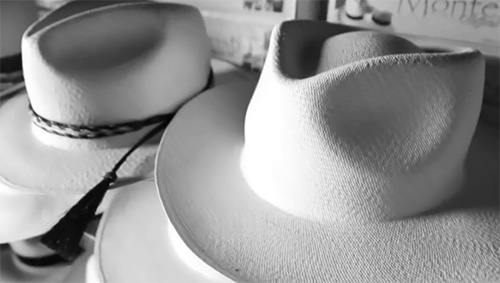
Some historical background
The fine thread straw hat was already a reality amongst the American Continent’s pre-Hispanic communities. The figurines in such cultures as Manteña, Jama-Coaque, Bahia, Milagro-Quevedo, and Chorrera exhibit versions of these types of hats. These straw hats emerged from Jipijapa (Manabi Province), during the Colonies and the first years of the Republic. Hat weaving was a big source of economic, cultural, social, and political development for the towns of the coast of Ecuador.
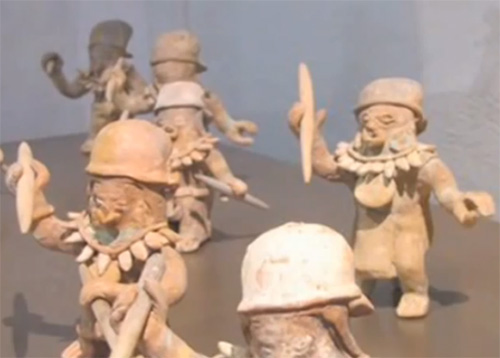
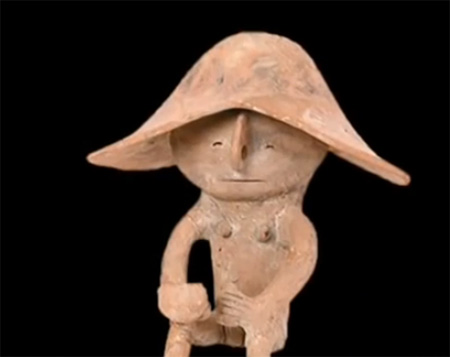
Ancient figurines that exhibit versions of toquilla
In the middle of the Independence War, botanists from the Royal Garden of Madrid named the toquilla straw, known then as “jipijapa”, with the name “carludovica palmata” to pay homage to Carlos IV and Queen Luisa (the royal couple of Spain, end of the 18th – beginning of the 19th century). The name “toquilla” came much later when the weaving became so fine and light that the hats could be folded and kept in pockets.
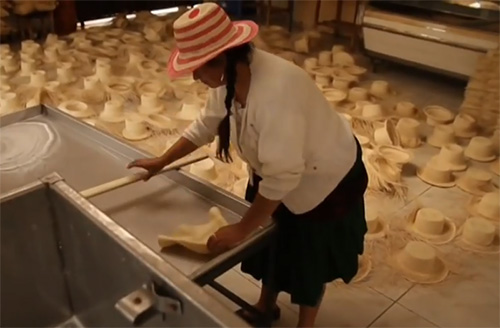
Near the end of the 18th century, Jipijapa and Montecristi type hats were sported by boat to Peru, Colombia, and Chile. In 1849, Manuel Alfaro, a Spanish merchant, took 220,000 hats to Panama, thus reinforcing commerce towards North America. Back in Ecuador, internal production starts blooming and expanding to Azuay and Cañar Provinces, with Cuenca city developing into another center of this type of handcraft. Eloy Alfaro inherits the family business and it becomes an important economic backer of the Liberal Revolution. For the first time in the history of Ecuador, a coastal product surpasses the cocoa exportation. Years later, when the Panama Canal was being built the hat takes off in the world and is hectically weaved in several townships of Manabi, Azuay, and Cañar Provinces in order to satisfy the growing demand.
How a toquilla is made
Many communities in South America bring the hat to life. In the highlands of Ecuador, the hability of the weavers becomes evident when one realizes that weaving is a part of their daily activities: they weave as they walk, as they shepper, or as the women meet to talk.

The process starts in the straw fields with sowing and cutting of the straw. Then, begins the preparation of the straw for a new process – bleaching. If you don’t boil it, you can’t weave. The places like Pile and Picoaza (in Manabi Province), Dos Mangas, Sinchal, Loma Alta, and Barcelona (in Santa Elena Province) share this labor. In order for the straw to bleach, the artisans have to leave it for the length of one hour at least. They bleach it two times in a row. They leave it for the night so that it would be under the moonlight for some time. The next day, the artisans wash it and begin splitting it with their nails.
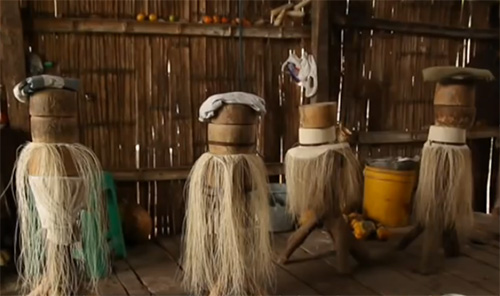
Wooden tripods used for weaving toquilla straw hats
For weavers, the process starts with a selection of the straw. The artisans weave according to the type of thread. To make the beginning of the hat, they start with 8 straws – this is called a “crab” start. They assemble a very small initial crown, very small.

The hats – particularly the extra fine and superfine – made in Pile and Montecristi, demand months of patient dedication. A hat like this takes about three or four months to complete. There are almost 20 tasks that complete the process of making the hat. Among them is bleaching, weaving, ironing the brims, beating the hat (to make it softer and more flexible), giving the woven hat a shape, pressing, adding a ribbon to the inside of the hat, etc.
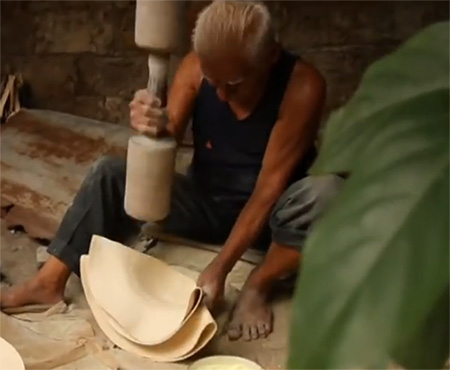
Beating the toquilla to make it more flexible

Ironing the brims of toquilla
Azuay and Cañar are the main production centers of common hats in the Andean Region. The manufacture of these types of hats can last one or more days of labor. The women are organized into societies. And the biggest outcome of this model is the link between 2,500 female weavers and several exporting companies settled in Azuay that amount to 90% of the sales of these types of hats. The hat and other toquilla straw handcrafts have become national icons and work sources for families in Manabi, Santa Elena, Azuay, and Cañar Provinces. The fine toquilla straw hat, universally known and appreciated as a “handicraft jewel”, is still a synonym of supreme distinction and elegance.
(c) UNESCO


